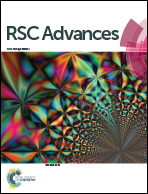Fate of nitrogen-15 in the subsequent growing season of greenhouse tomato plants (Lycopersicon esculentum Mill) as influenced by alternate partial root-zone irrigation
Abstract
Alternate partial root-zone irrigation (APRI) has profound impacts on the distribution of nitrogen fertilizer applied in-season. However, the fate of previous residual nitrogen in the subsequent crop growing season under APRI has seldom been studied. Our objective in this study was to investigate the effects of APRI on the reutilization, redistribution and loss of residual nitrogen in the subsequent season. To achieve this objective, in the previous season, greenhouse tomatoes (Lycopersicon esculentum Mill) were chosen as a plant material, and were treated with two irrigation patterns (APRI and conventional irrigation (CI)), two 15N labeling depths (K15NO3 with a 15N abundance of 10.57%, labeled in the 0–20 cm and 40–60 cm soil layers, respectively) and two transplant times (early and late summer). In the subsequent season, we adopted the same irrigation patterns, but with no 15N labeled in the soil. Our results showed that 81.3–90.7% of the residual 15N from the previous season still remained in the 0–100 cm soil layer, 4.1–7.3% was absorbed by the subsequent-season tomatoes, and 2.9–14.6% was lost. The 15N reutilization rates (defined as the ratio of 15N uptake by the subsequent tomatoes to the total applied 15N) were 2.20–4.73% under the different treatments (the 15N utilization rates of the in-season tomatoes were 18.8–27.9%). Compared to CI, APRI significantly (p < 0.05) increased the plant 15N uptake and 15N reutilization rate, and APRI also contributed to a greater mineral and organic 15N amount in shallower soil layers. Overall, the tomato 15N reutilization rate was found to be significantly (p < 0.05) higher when 15N labeling was performed in the 0–20 cm soil layer compared to that in the 40–60 cm layer. Moreover, the 15N reutilization rate had a significant positive relationship with the root dry weight (R = 0.74*), root length density (R = 0.72*), soil mineral 15N (R = 0.91**) and total residual 15N amount (R = 0.88**).



 Please wait while we load your content...
Please wait while we load your content...